In today's world, navigating the complexities of pollution control regulations can feel overwhelming, but it doesn't have to be! Understanding the key elements of these regulations is essential for businesses and individuals alike who are eager to contribute to a cleaner environment. By adopting best practices and staying informed, we can all play a part in reducing our environmental footprint. So, let's dive deeper into this important topic and explore how effective pollution control can shape a sustainable futureâread on to uncover more!
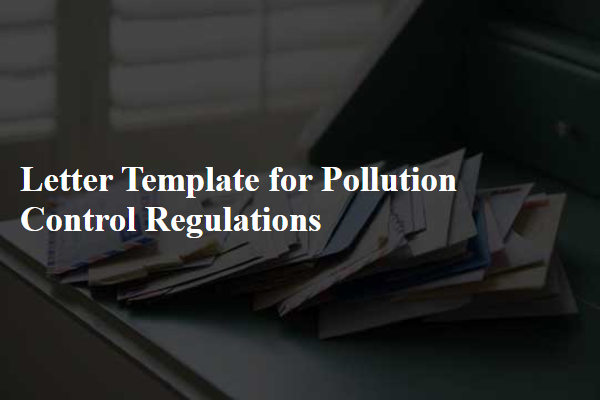
Regulatory compliance standards
Pollution control regulations are critical for ensuring compliance with environmental standards set by agencies such as the Environmental Protection Agency (EPA) in the United States. These standards dictate permissible levels of pollutants like nitrogen oxides (NOx), particulate matter (PM), and sulfur oxides (SOx) in air and water quality, as established under the Clean Air Act and Clean Water Act. Businesses, especially in manufacturing sectors such as automotive or chemical production, must implement stringent monitoring processes and adopt advanced technologies, including scrubbers and filtration systems, to minimize emissions. Non-compliance can result in substantial fines, legal action, and significant reputational damage. Furthermore, regular audits and reporting procedures are essential for demonstrating adherence to these regulations, ultimately contributing to public health and environmental protection.
Emission reduction targets
Emission reduction targets play a critical role in combating pollution across various industries, particularly in urban areas with high traffic volumes such as Los Angeles, California. The city aims to reduce greenhouse gas emissions by 40% by the year 2030, as outlined in the Sustainable City pLAn adopted in 2015. These targets influence key sectors, including transportation, energy production, and waste management. Regulatory bodies emphasize the use of cleaner technologies like electric vehicles and renewable energy sources, significantly decreasing reliance on fossil fuels which contribute to air quality deterioration. Furthermore, businesses exceeding specified emission limits, such as the National Ambient Air Quality Standards set by the Environmental Protection Agency, face financial penalties and mandatory compliance measures, making adherence essential for operational sustainability.
Monitoring and reporting requirements
Pollution control regulations are essential for ensuring environmental sustainability, particularly in industrial settings. Monitoring requirements often mandate continuous emissions monitoring systems (CEMS), which measure pollutants like sulfur dioxide (SO2) and nitrogen oxides (NOx) in real-time. Facilities must adhere to reporting standards set forth by regulatory bodies, such as the Environmental Protection Agency (EPA) in the United States, requiring quarterly submissions of emission data. Allowable emission limits, often defined in parts per million (ppm), play a critical role in compliance, influencing operational practices and equipment maintenance. Non-compliance can result in significant fines, legal repercussions, or even facility shutdowns. Consistent data collection aids in verifying adherence to the National Ambient Air Quality Standards (NAAQS), which are vital for protecting public health and the environment.
Public awareness initiatives
Public awareness initiatives play a crucial role in the effectiveness of pollution control regulations, as they educate communities about environmental issues. Campaigns, such as the "Clean Air Day" and "World Environment Day," which occur annually in various countries, raise awareness about air quality and waste management. Local municipalities, like New York City, implement outreach programs that inform residents about recycling rules and the importance of reducing plastic usage, targeting major pollution sources. Educational workshops in schools aim to engage young people in sustainability practices, helping to foster a generation that values clean environments. Collaboration with non-governmental organizations further amplifies these messages through social media platforms and community events, increasing public participation in pollution reduction efforts.
Enforcement and penalties
Effective pollution control regulations are crucial for maintaining environmental integrity, particularly in urban areas like Los Angeles. The United States Environmental Protection Agency (EPA) enforces specific legislation, such as the Clean Air Act, which sets air quality standards to limit harmful emissions from industrial sources. Penalties for non-compliance can reach up to $37,500 per day for violations, emphasizing the importance of adhering to these regulations. In addition to financial repercussions, companies found in violation may face legal actions, shutdowns, and increased scrutiny from regulatory bodies. Local authorities, such as the California Air Resources Board, also play a significant role in monitoring air quality and enforcing state-specific regulations, ensuring that public health remains a priority across all sectors.
Letter Template For Pollution Control Regulations Samples
Letter template of request for exemption from pollution control regulations
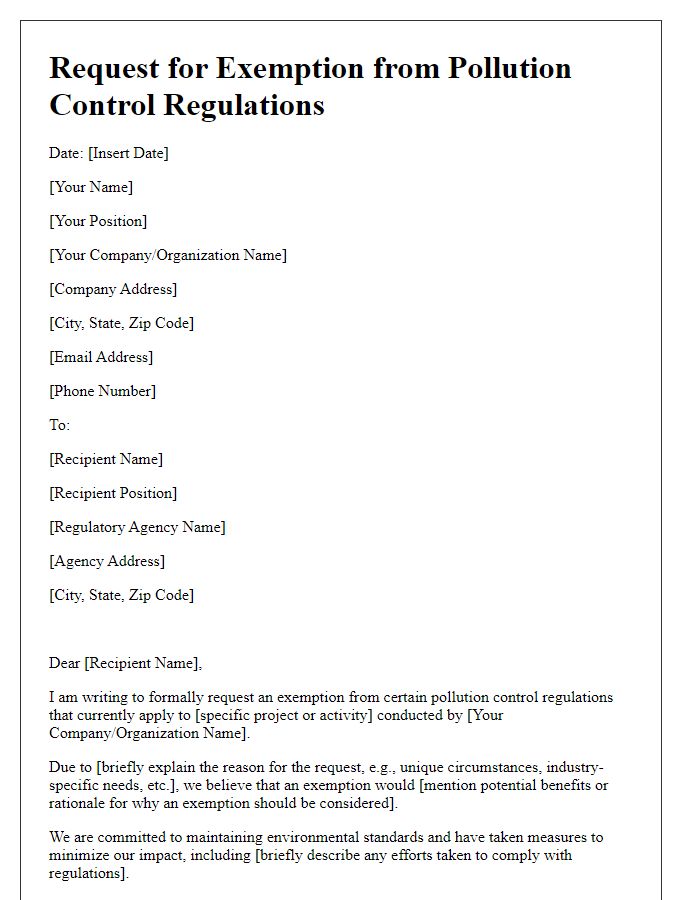
Letter template of partnership proposal for pollution control initiatives
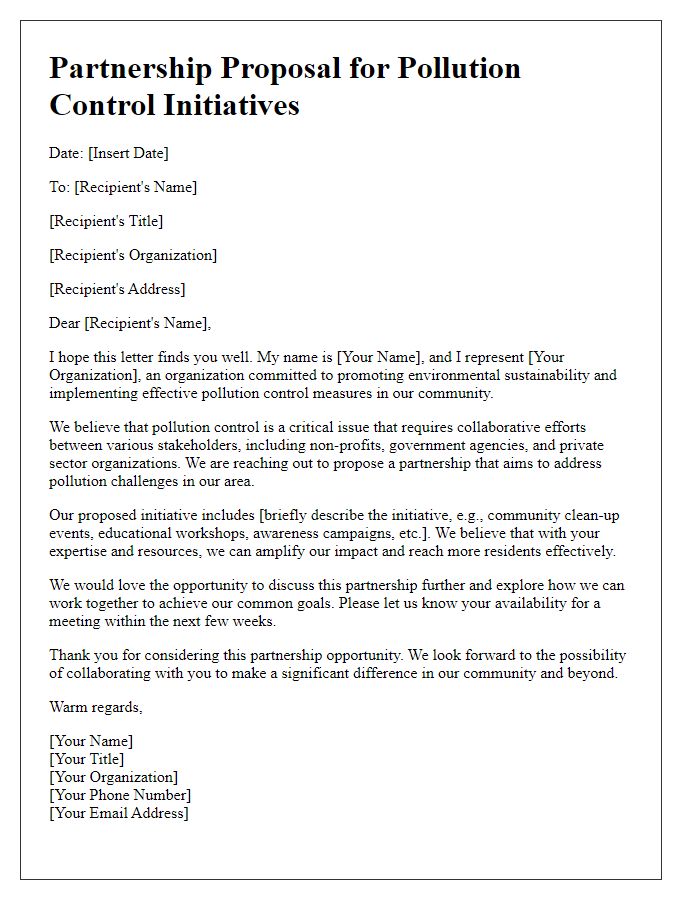
Letter template of feedback on pollution control regulation effectiveness
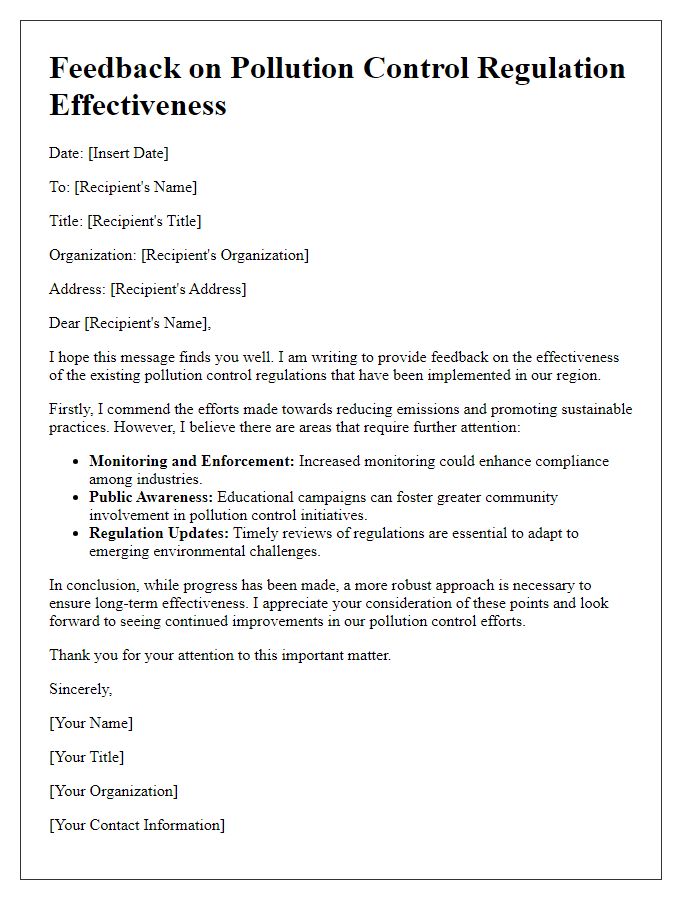

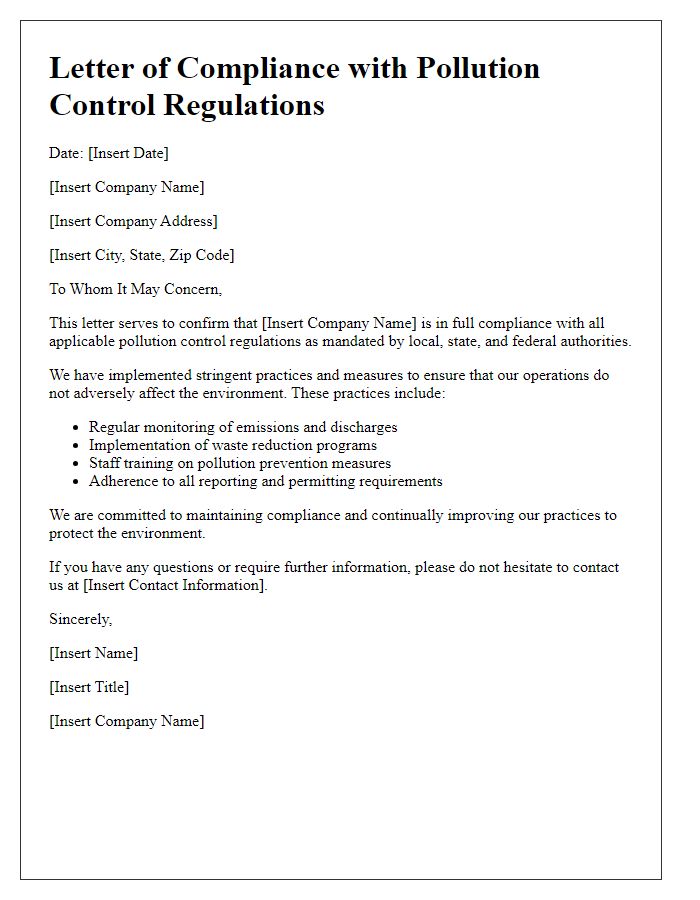
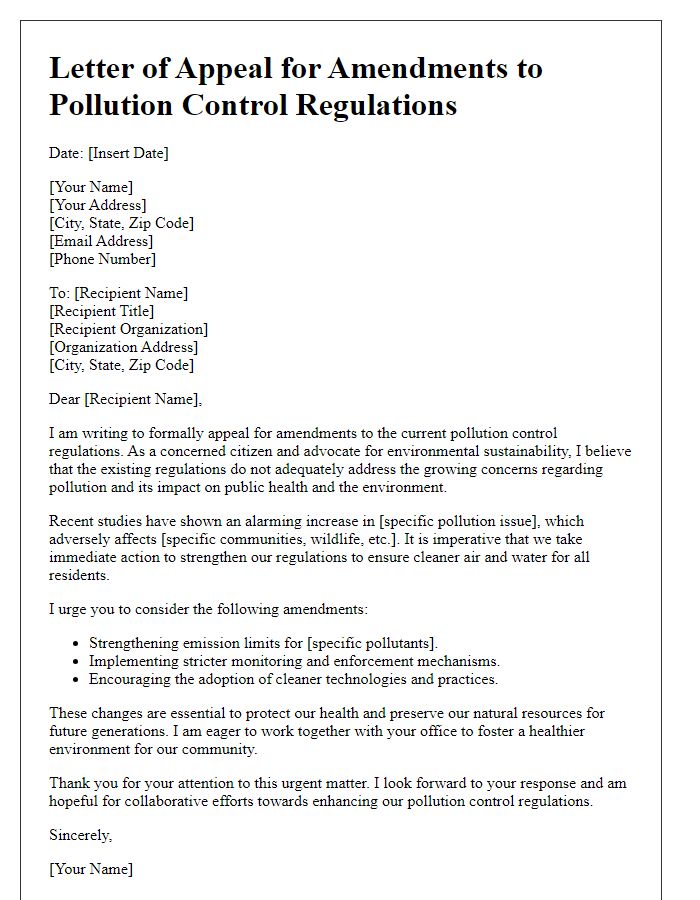
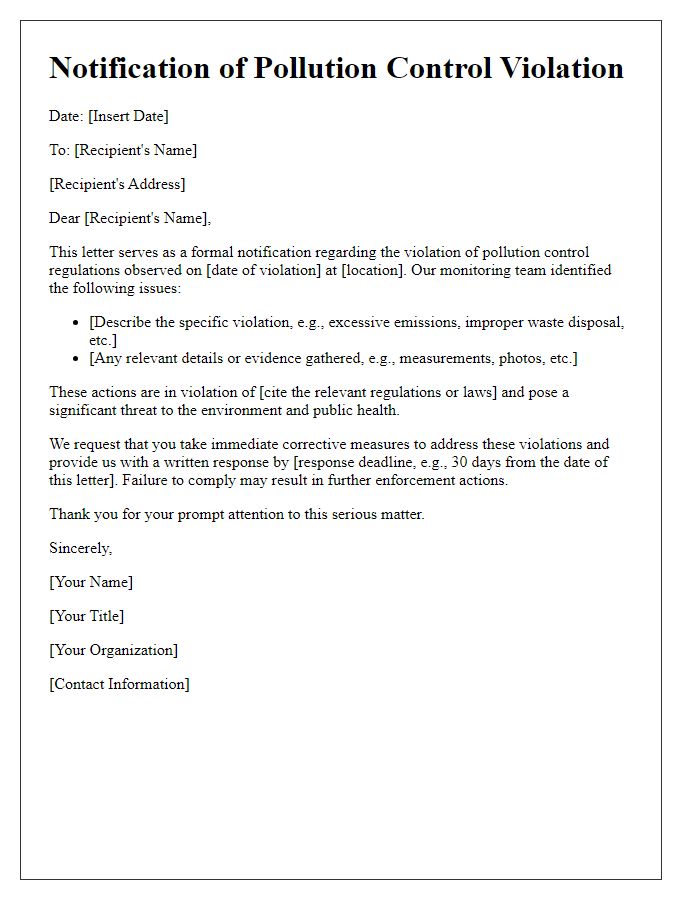
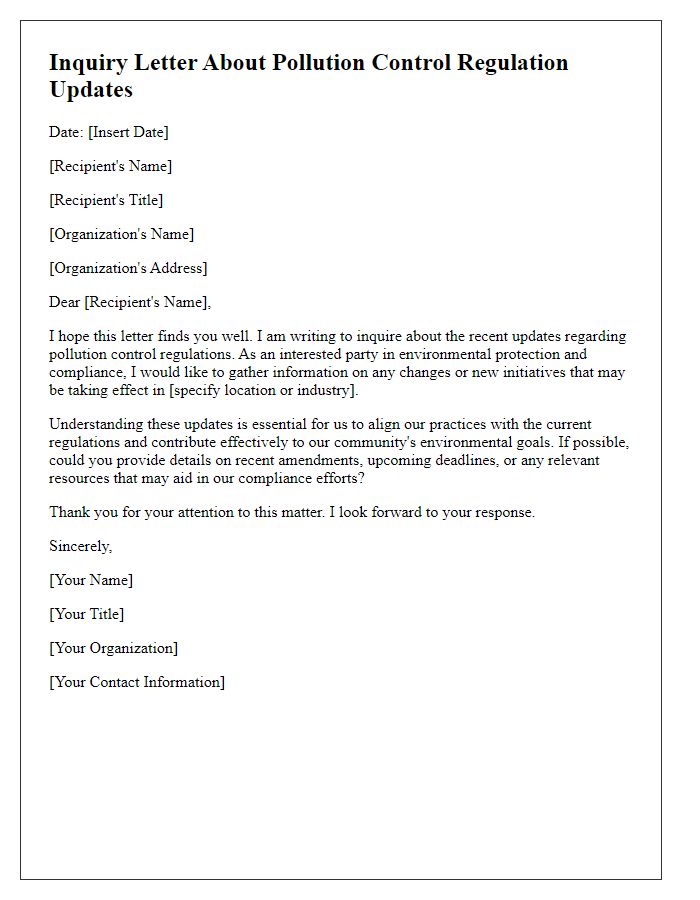
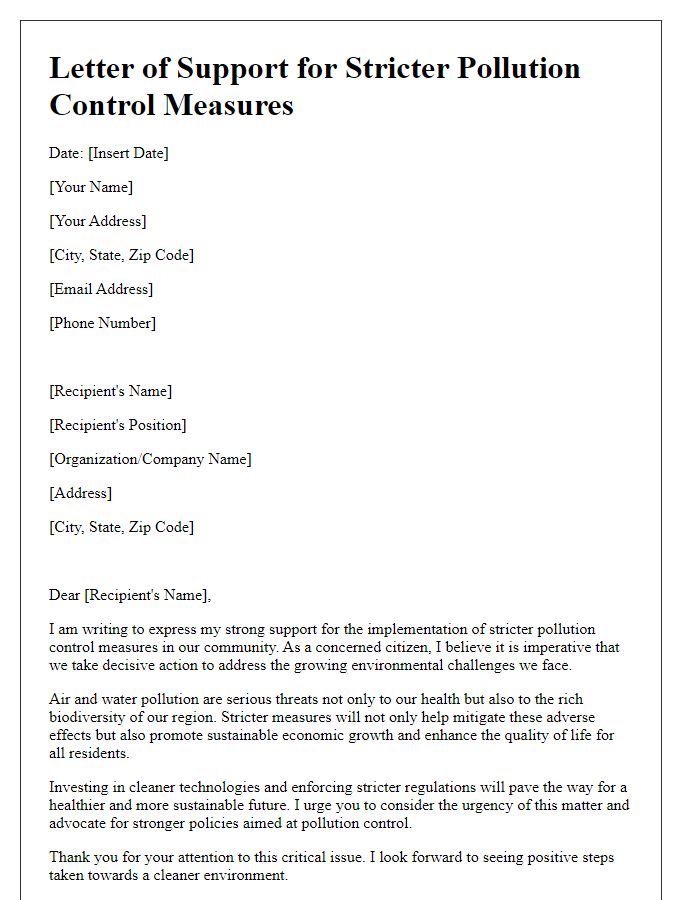
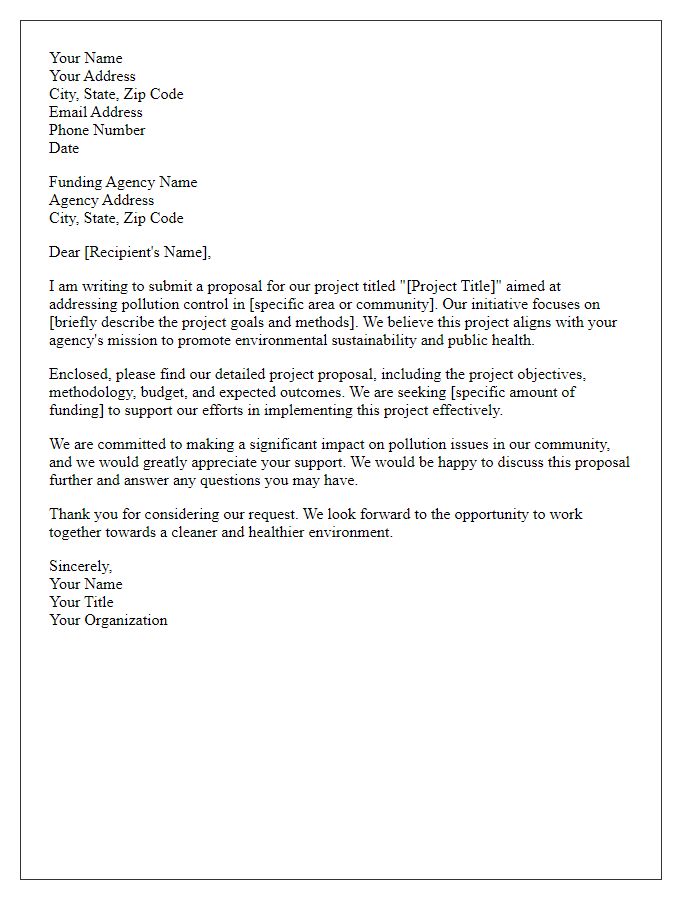
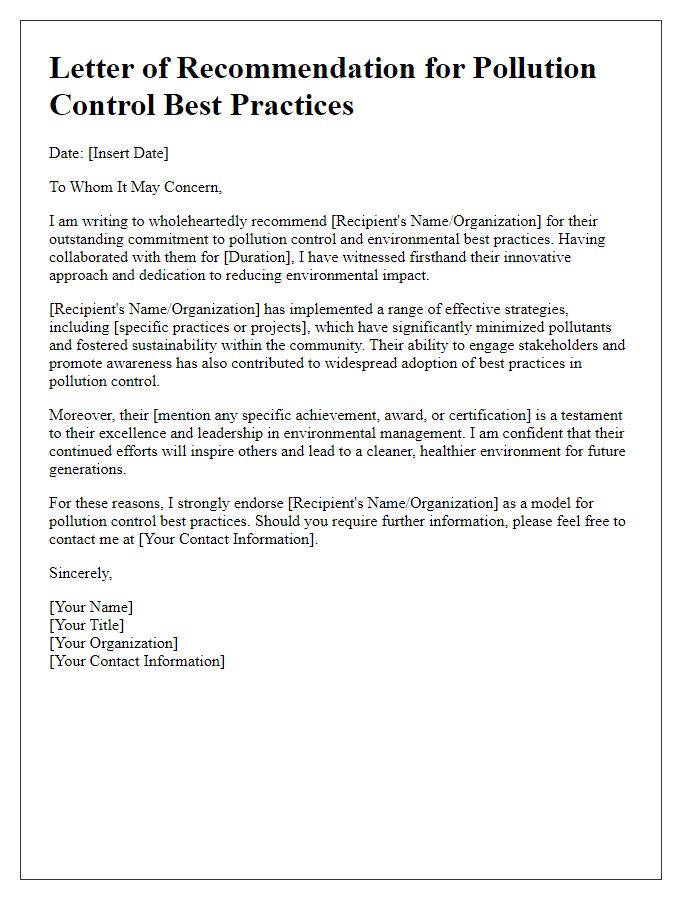

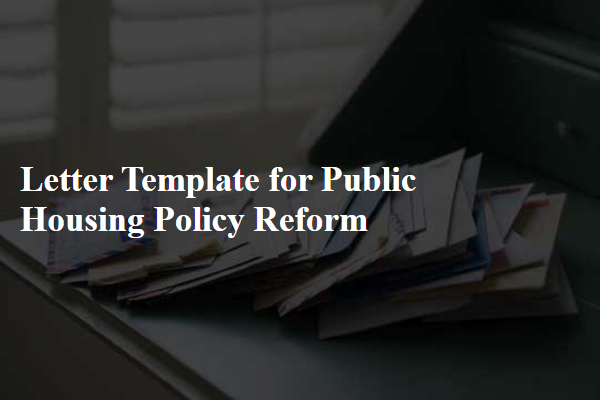
Comments